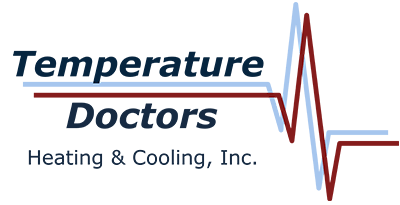
A furnace is almost always a background player in your home, keeping you warm across the cold winter months. It regularly doesn’t get noticed until a malfunction appears.
One source could be that your furnace has a cracked heat exchanger. It’s a potentially dangerous issue, so it’s critical to know the evidence of a cracked heat exchanger and what you can do if you suspect that is the problem.
What Is a Heat Exchanger in a Furnace?
A heat exchanger helps move heat from the combustion chamber in your furnace to the air that flows through the ventilation. It usually handles this via coils or tubes that heat up the air while functioning as a barrier to keep the gasses formed in the combustion chamber, called flue gasses, from escaping out into your home.
Is a Cracked Heat Exchanger Dangerous?
Thanks to its important role, it’s no surprise that a cracked heat exchanger can pose a risk. A damaged heat exchanger can permit dangerous gasses – such as carbon monoxide, which can be lethal – to flow through your home.
For that reason, do NOT run your heating if you suspect you're dealing with a cracked heat exchanger, as letting it run could make the entire household sick. Call an HVAC professional as soon as possible if you believe your furnace has a cracked heat exchanger that needs repair.
Four Warning Signs of a Cracked Heat Exchanger:
- Furnace shuts off: Cracks in the heat exchanger can cause your furnace to turn off.
- Unusual Smells: If the air leaving your furnace has a powerful chemical odor, it could be an indicator that gasses are leaking through cracks in your heat exchanger. These byproducts, which can smell like formaldehyde, are a significant warning sign.
- Carbon monoxide alarm goes off or you feel symptoms of poisoning: If a cracked heat exchanger is releasing carbon monoxide into your home, your carbon monoxide alarm could go off or family members may experience signs of carbon monoxide poisoning. Complications include headaches, dizziness, weakness, nausea, vomiting or feeling tired. If an alarm goes off or you feel unwell, leave the home immediately and then call for help.
- Soot: If you find black sooty accumulating around the exterior of your furnace, it’s another sign something might be seriously wrong.
What You Should Do if the Furnace Heat Exchanger is Cracked
If you believe your furnace has a cracked heat exchanger, call a professional well versed in furnace installation Rockford as soon as possible so they can examine your system and, if required, perform a furnace heat exchanger replacement. Costs will fluctuate depending on the situation, but estimates can roughly suggest $1,000 to $3,000.
Estimates aside, the good news is that heat exchangers are often protected by the warranty. It's a good idea to check the warranty paperwork on your furnace, since while the warranty won't always cover the entire cost of repairs, it could significantly shrink your bill.
How to Prevent a Cracked Heat Exchanger in Your Home
One of the easiest ways to prevent a problem in your furnace overall is via regular furnace maintenance. Furnaces work the best when they run efficiently. Calling a skilled professional to inspect your furnace for broken-down parts, dirty filters and other common problems can help you avoid getting a big bill later on.
It’s also beneficial to inspect your furnace filters every few months – it’s recommended some filters be swapped out every 90 days or sooner if they are dirty or grimy. While the filters aren't connected to the heat exchanger itself, the strain of drawing air through a clogged filter makes the entire furnace work more vigorously to accomplish its job. And the harder your furnace has to work, the more deterioration pieces like the heat exchanger will endure.
